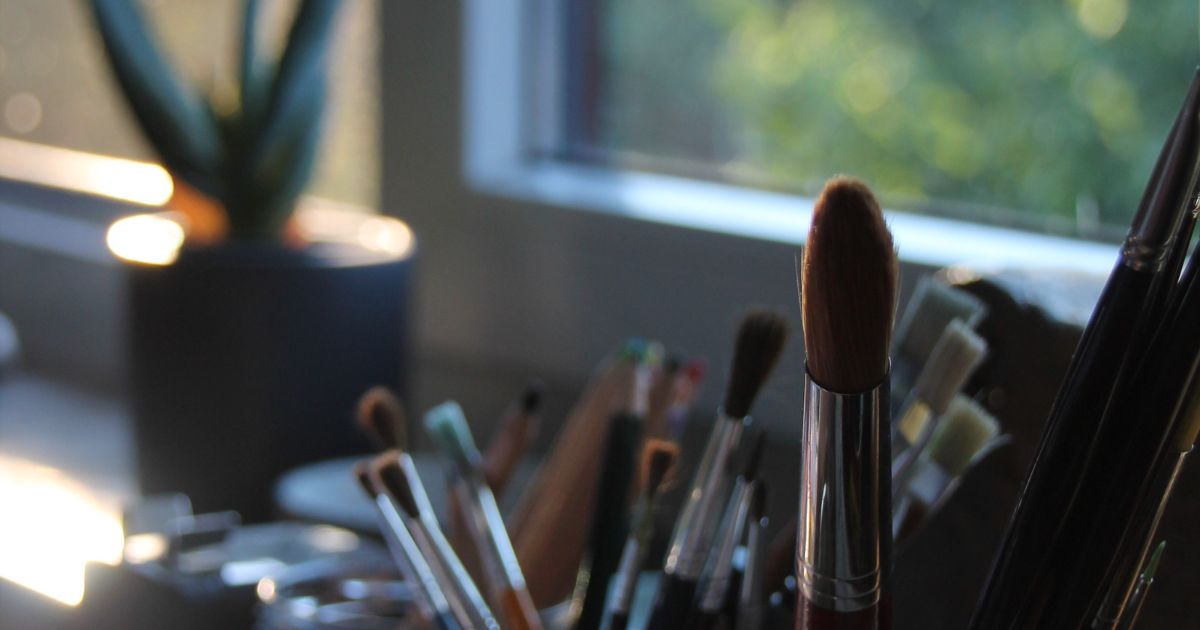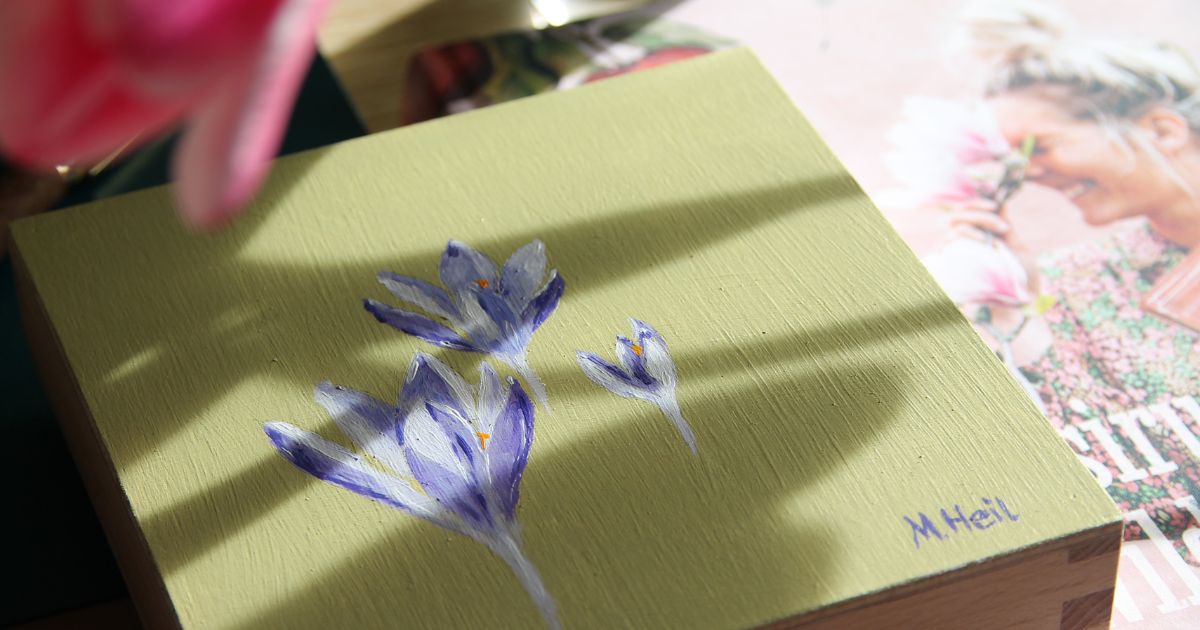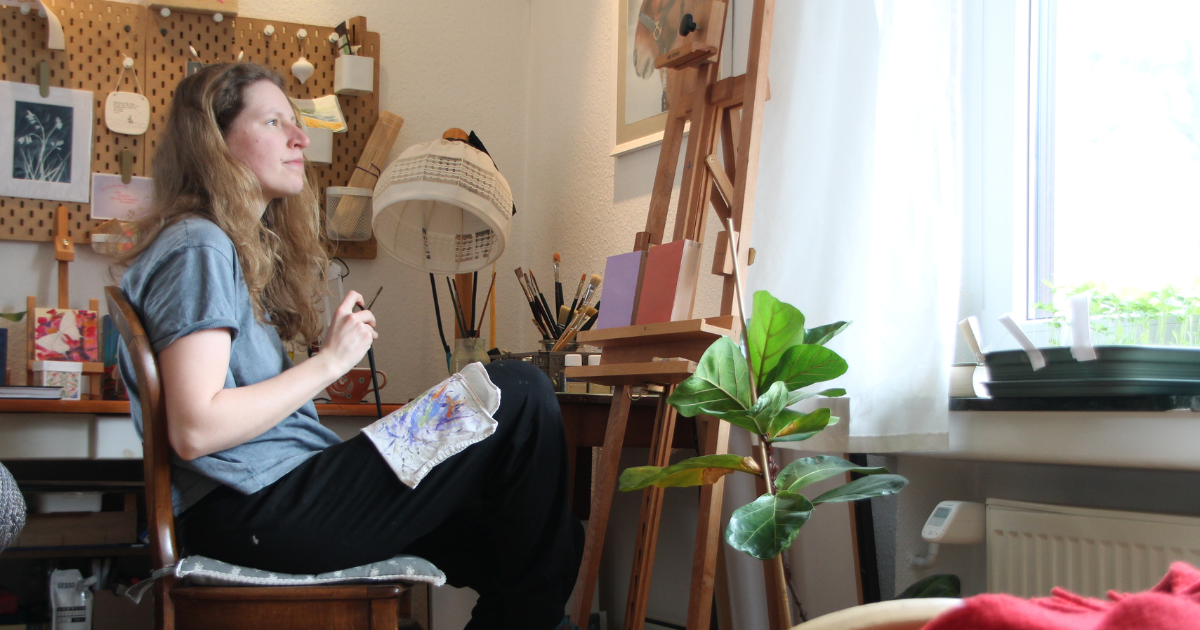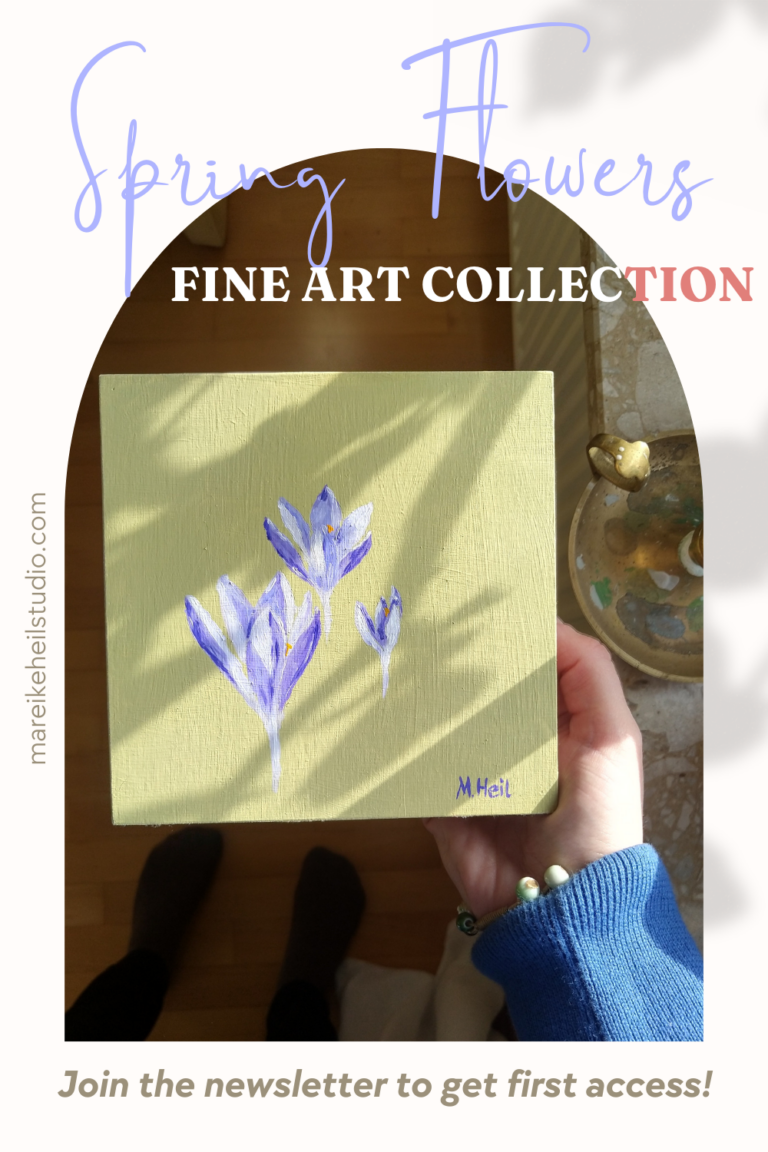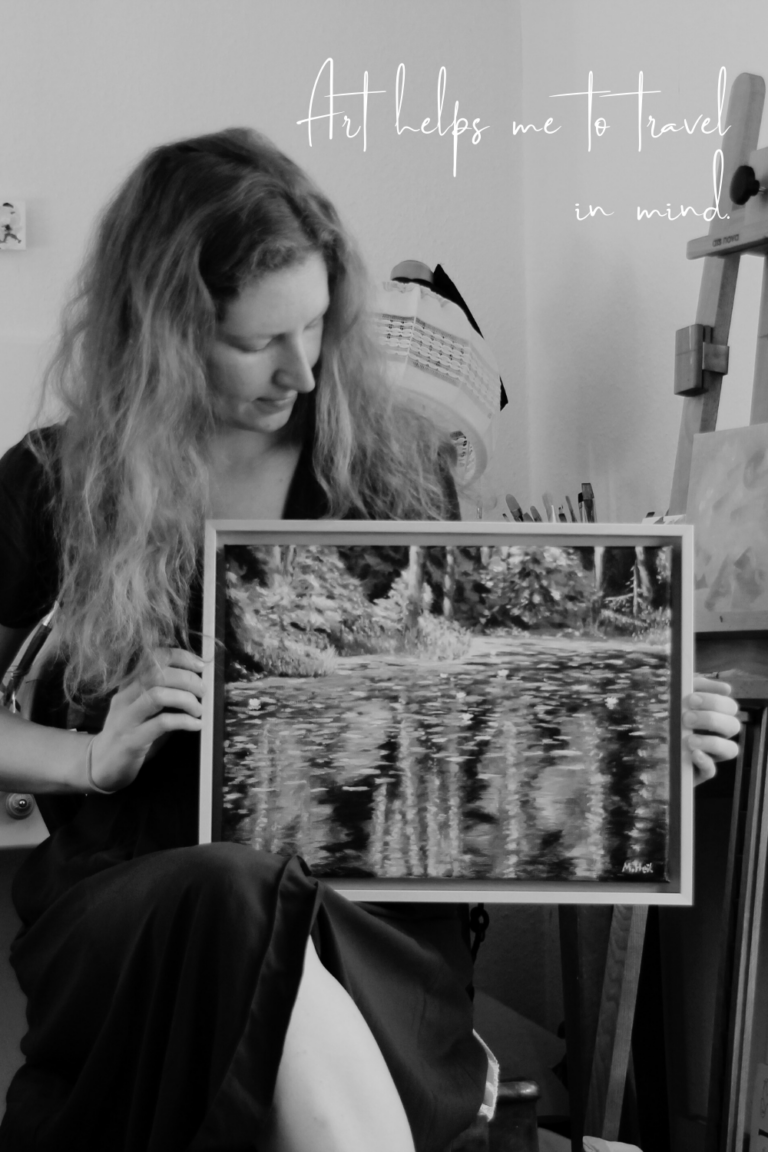I’m not good enough. I’m a creative. I don’t deserve a flourishing art business, because only masters flourish. Maybe you’ve noticed (rationally) this might not be true, still some part of you believes it. I also fell for this myth of the starving artist, though no one ever really told me it was true. One day I had to face the fact that I believed it. Now be honest, do you believe it yourself? Just imagine, you had a bad day, you’ve been creative, but your work wasn’t as good as it used to and now it’s late und you lie in bed in darkness and all those melatonin-propelled thoughts start to rush in. However, in this article I show you, how to build a sustainable and flourishing art business that supports you. Why do you want to have this? Because it gives you peace and happiness, money and purpose, goals and roots. The only thing this isn’t: quick and fast.
Dismantling the Myth of the Starving Artist.
Before we start, a short elaboration on the Myth of the starving artist. As I wrote above, one day I had to face the fact that I believed in it myself. That was when I realised that I want to work as a creative entrepreneur. That I wanted to be a writer and painter and that probably no other “job” will give me as much joy and purpose. But creatives don’t earn money, right? And I want to have money. I want to reach many soul goals that require lots of money, so I need to earn it. What always helps me with myths I had been telling myself is dismantling them, which I learned in university. Truths are not always real truths, but myths that become true. (A critic might say “but there are many artists earning little to no money” and I would reply “Yes, but not these artists are wrong or bad, but the system they are told they have to follow.”)
Anyway, I think I believed this myth because it’s the underlying tone that goes along with working as a creative and I had no role model. I grew up in a very structured, output-oriented community, where hard physical labour is highly approved, and we had no friends or acquaintances who worked in the arts. So, the first thing I did to change my mindset, was looking for role models online – creatives who live from their art business. Still, there is the question where this underlying tone comes from.
Don’t follow the Old Masters
What I recognised when I studied Art History was that we mostly looked at “The Old Masters”, analysed their style and compared. They are stylised as the Grande Masters who produced perfect art, which is now presented in art museums all over the world, worth way too much money for most people to buy. They are what artists looked like, worked like, how perfection in painting has to look like. When I asked my lecturers to write my papers about (political) cartoons and illustrations in books they were baffled, because how could I. Besides, I always had to write a chapter about why this is art.
So, I think it’s this stylisation of the perfect (male) Master who passionately suffers and is immersed in emotion, while being approved by museums and galleries. That these masters where often either craftsmen earning their money through lots of commissioned portraits, rich men who enjoyed painting as a leisure activity or belonged to a patreon, so they didn’t had to worry about money, is seldomly told. All other artists – the passionate but not blessed by good fortune – where indeed neither seen nor wealthy. Anyway, the traditional way of becoming an artist has long been in control of galleries. Who gets to be displayed and who doesn’t? Who is bought by the rich and who isn’t? Whose message is in tune with our world view? Who creates perfect art?
Not starving, but flourishing
Luckily, we now have the opportunities today to walk off from traditional paths and build the art business we want. We don’t have to rely on a few people who decide what perfect art looks like and other few rich people who buy our art. Almost all people have some kind of art – ceramics, paintings, prints, photographies, etc. – in their home, to make it individual and cozy. Hygge some say.
I don’t want to be a perfect male Master approved by museums and I get to decide which painting of mine is art, which is practice and which is rubbish. Consequently, I also don’t need this approval to be successful and flourishing. The only approval I need is from the normal people loving my paintings and buying them, because they see some of themselves in them. So you also don’t have to starve, as long as you become visible to the people who will cherish and love your art and throught this support your art business.
When you are able to become visible, do your branding and tell your and your artworks story, your art business is able to flourish. However, there are two ways of reaching this point of success: Through traditional, excessive and aggressive marketing or through building a sustainable creative business, which supports and nourishes you. That comes from your heart to reach other hearts. Thus, understanding your customers is essential to both, but the first way manipulates through speech, while the second seeks connection through soul.
What does SUSTAINABILITY have to do with a flourishing business?
In general, a sustainable business is seen as a business which takes care of the climate and takes into account social, as well as environmental needs. Yet, the concept of sustainability in business can be extended much further, which is especially helpful for creative entrepreneurs, as our “products” need to emotionally resonate with our customers in one way or another. In addition, creative output and development relies on inspiration and time spent in a relaxing, non-stressed way. Otherwise we might face creative blackout or burnout. Therefore, below you will now find my tips on how to build a sustainable, flourishing art business.
Collaborate with other creative entrepreneurs or local companies.
We tend to talk about competitors when looking at other artists, though each of us should know that as unique as our works and stories are, as unique are our customers. So why not collaborate with others, maybe even local artists. Support and lift each other up. Create retreats together, exhibitions and fairs.
Another great way to become visible is finding local companies to collaborate with. Ask yourself, where are my customers? Then start to exhibit there. Choose restaurants, cafés or stores. Look for home staging services or interior designers. It’s great to choose to reach many people through web platforms, but it’s also great to build a local network of people who support you, as well. It’s the balance that makes the difference and that helps your art business.
Sustainability is not quick and fast.
Rush, rush, rush. Numbers, rising. Says the mainstream marketing and business economy. Don’t think about your art business as a rocket, but more of a tree. They grow slow and your creative business should too, because it’s lasting longer. Also remember when your business grows fast, you need to grow even faster yourself to fit in. For most people it’s too fast and they struggle with burnout. Growing slowly (sustainably) means building roots and connections, strong enough to withstand heavy storms and droughts.
Do you have rhythms?
It’s important to take into account your seasons. A sustainable business can be seasonal. Even a creative one. Reflect on your pace, your daily, weekly or monthly rhythms. This will help you to build a business that nourishes yourself. For example, I know that I don’t make good decisions when on my period. Hormones, cramps and being pms-y don’t make a good mixture for me to make good decisions or take action. So I try to plan around these days and instead do things that lift me up. Another example is that I go very much inward during winter, especially in December and January. So why not plan that in? Selfcare and Soulcare should be part of every business planning, especially if it’s a one-person show.
Talking money
A sustainable art business also supports you financially. Many artists live from month to month, but that is not how a sustainable business is build. It will help you to create a buffer for bad times, sickness or retirement. It will help you to plan your future. I have soul goals and I want to reach them. That’s only possible when I’m able to save money. Thus, not only plan your prices fair for your customer, but especially fair for you. Rise your prices, if necessary and communicate this openly to your customers.
That doesn’t have to mean you can only sell to well-situated customers. Through payment-plans or alternatives as prints or licensed art, you provide more options for many people and reduce the pressure on you to constantly create new artwork.
Know your brand and you don’t fall for every trend
An online stroll around and you find yourself shrouded in new trends, promising fast sales, more followers, a bigger community. While there is nothing against trying new tools and platforms, it’s not sustainable to catch up on every trend, hoping it to be “the one”. A better, more sustainable way is to be aware of your business’ purpose, identity and goals. Moreover, be aware of your roots, as an artist and as part of your brand. Marketing these from a soul and heart-oriented place, rather than from a logical, head-focused place, helps you to decide which direction supports your art business to flourish and nourishes you.
Supporting your creative time
Lastly, your business needs to support your creative time in the studio. No matter if it’s play time, for inspiration or creating your next highest piece. Still, sometimes we’re stressed, and our heads are full of tasks and duties, which makes it difficult to be creative and focused. What often helps are plans and routines, as well as boundaries. Outsource wisely, so you don’t find yourself knee deep in admin chaos and choose tools that help you to market properly, in accordance with your boundaries. By the way, the artist Anna Bear hosts a great workshop named #taketimetomake, to help you find the time to create.

